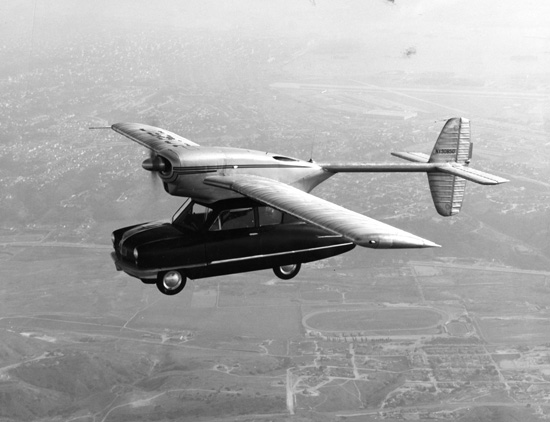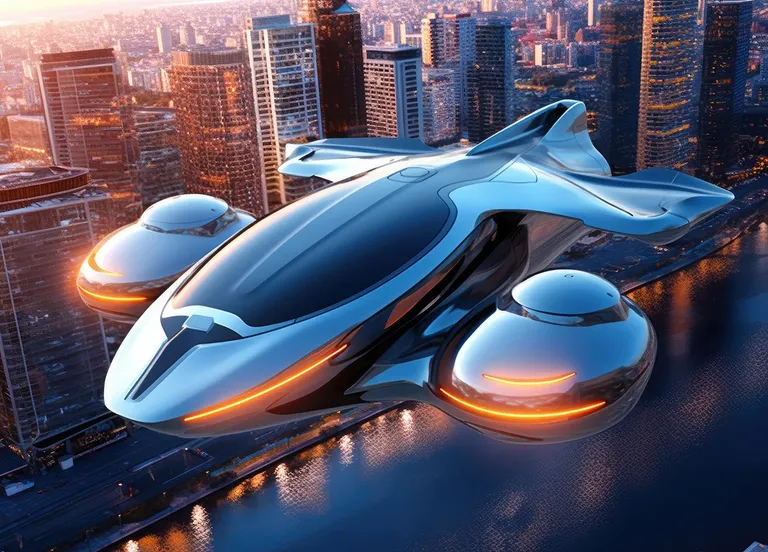Flying cars: the definitive symbol of the future. Often accompanied with sleek, Nuclear Age designs, the idea of making a car fly has existed ever since we had cars and flying vehicles. For the past century, flying cars have been regarded as a far-off dream of a future we will never get to see. But in the Digital Age, the future is now. So why don’t we have flying cars?

First, a preface. While we do technically have flying cars, those flying cars are just a car welded to a plane. That’s not what I’m talking about though. When I say “flying car”, I am referring to the “sci-fi” version that we all want. With that out of the way, let’s begin.
The first obvious hurdle for creating flying cars is technology. Yes, you can strap wings and an engine to a car, but that would require a runway to take off, not to mention the weight and size of the car itself. To solve these problems, the common idea that a flying car should be a lightweight VTOL with wheels. Back when this idea was originally suggested (roughly 63 years ago by Paul Moller), this form of technology was impossible. However during the modern age, many things that were seen as impossible back in the 60s are now a reality. Laser guns, personal exoskeletons, the Internet itself were all concepts that were deemed as impossible, that we have now. So why don’t we have flying cars? VTOL technology was perfected during the late 80s, with the introduction of the V-22 Osprey. Surely, four decades later, we should have the technology to make one. But no one has. This indicates that our technological ability isn’t the reason.

Unlike the aforementioned Osprey and most other VTOL craft, flying cars would be produced by the private industrial sector, which is known for being much more cutthroat than the military industrial sector. While, yes, there is competition amongst military corporations, most of them have a niche. Colt makes firearms, Lockheed makes planes, General Dynamics makes tanks, and so on. There isn’t a lot of overlap, and thus, not a lot of competition. The same cannot be said, however, for the private sector, where many corporations scramble to achieve monopoly on a product to secure the most funding. Amazon, Tesla, Toyota, Ford, and Mitsubishi all make cars, and also make many other products. Therefore, one would think that they would all be racing to make a new product of the future, solely to obtain a monopoly on it. The fact that they aren’t suggests that there’s something else at play.
Money: we all know it, we all want it. And so does the government. Oftentimes, the argument that too much money is going to the military is brought up. Regardless of whether or not that statement is true, it does pertain to our topic at hand. Suppose the private companies want to make private cars for the reasons listed above, but can’t due to a lack of government funding. That would explain it, if not for how high the net worth of these private companies are. Amazon, $1.589 Trillion. Tesla, $805.86 Billion. Mitsubishi, $64.56 billion. If Forbes is to be believed, then these corporations have more than enough money to make a flying car. So why aren’t they?

This leads to our final conclusion. If we had flying cars, how many people would actually buy one? Sure, they’re cool, but they’re also impractical. Anyone who owns one would need both a driving license and a flying license, which costs a lot of money. Policing traffic would be an absolute nightmare. And collisions would be absolutely awful. And while the wealthy could use them as a status symbol, private jets are far more luxurious. Overall, there is no reason for making a flying car, other than for the novelty of it. Corporations have far more profitable investments for them to make. So, unfortunately, the classic symbol of the future won’t be made in the future, despite them being featured in every movie about the future.

























wyatt • Mar 13, 2024 at 2:40 pm
This article is really interesting good job